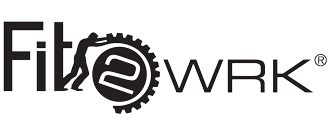Education
We have both onsite educational opportunities as well as offsite CEU presentations occurring nationally. Contact your local Fit2wrk representative to inquire.
- ONSITE EDUCATION
- Reduce Risk, Cost & Loss Time with MSD's in the Workplace
- Understanding & Properly Implementing Pre & Post Offer Employment Testing
- Symptom Magnification
- Ergonomic Assessments
- Developing a Legally Compliant Job Demands Analysis
- Workers Compensation and Rehabilitation
- The Industrial Athlete
- Repetitive Strain injuries
- Healthy Aging for a Sustainable Workforce
- Return to work post injury
-
Back Injury/Proper Lifting Techniques
-
Slip & Falls Prevention
-
Repetitive Strain Injury Prevention
Reduce Risk, Cost & Loss Time with MSD’s in the Workplace:
It is no mystery that there are significant costs and loss time associated with soft tissue injuries in the workplace. With little standardization and consistency of care delivery, the outcomes are varied from one provider to the next. The solution is the development of an integrated approach that manages and reduces risk throughout the continuum of care.
Understanding & Properly Implementing Pre & Post Offer Employment Testing:
Addressing safety and health issues in the workplace saves the employer money and adds value to the business. With an ever increasing aging workforce that is less conditioned than ever before combined with a constant threat to the employer of “pre-existing” conditions, hiring and retaining qualified and physically “able” workers is one of the greatest challenges employers face today.
Symptom Magnification:
As clinicians we are aware of the influence that symptom magnification can have on the client’s perception of his or her job readiness. Therefore, in order to thoroughly assess an individual’s abilities in relation to the field of work, it is important to gather both objective and subjective findings during physical effort testing.
Ergonomic Assessments:
Ergonomics is the scientific study of people at work. The goal of ergonomics is to reduce stress and eliminate injuries and disorders associated with the overuse of muscles, bad posture, and repeated tasks. This is accomplished by designing tasks, work spaces, controls, displays, tools, lighting, and equipment to fit the employee´s physical capabilities and limitations.
Developing a Legally Compliant Job Demands Analysis:
JDA or PDA is a process of establishing what a job is in its entirety, in a way that complies with the law. For the purpose of employee rehabilitation and return to work, a JDA/PDA is the “cornerstone” of the analytical process used to determine compatibility between a worker and a specific job.
Workers Compensation and Rehabilitation:
New focused care in Physical Therapy drives early return to work and changes the mandate for treatment delivery from a disease to a functional model. Care needs to be directed towards helping to gain functional improvement as expeditiously as possible to return to some form of gainful employment. Job specific essential duties become the template for care delivery and ultimately return to duties, whether full, transitional or modified, becomes the goal.
The Industrial Athlete:
The physical training of Industrial Athletes, whose jobs require strength, agility, and stamina is essential in keeping their bodies healthy and fit. This is the key to performance and reduced injuries on the job. Findings in 2005 data compiled by the Department of Labor indicate that sprains and strains were the leading nature of injury and illness in every major industry sector. Preparation can be the best reducer of musculoskeletal injuries in the workplace.
Repetitive Strain injuries:
According to the U.S. Dept of Labor, Occupational Safety and Health Admin (OSHA), repetitive strain injuries are the nation’s most common and costly occupational health problem, costing more than $20 billion a year in workers compensation. Carpal tunnel syndrome (CTS) is the most common nerve compression disorder of the upper extremity. Almost half of the carpal tunnel cases result in 31 days or more of work loss and ONLY 23% of all CTS patients returned to their previous professions following surgery, according to the Bureau of Labor & Statistics and the National Institute for Occupational Safety & Health.
Healthy Aging for a Sustainable Workforce:
This seminar describes a situation many companies are facing, a growing aging work force. Due to unemployment and higher productivity demands, today’s workers are being asked to do more as their abilities decline with age. Our program allows for base line testing followed by periodic follow up testing determining higher risk due to decreases in physical abilities. A plan can then be developed to address weaknesses and risks.
Return to work post injury:
For employers, workplace injuries and illness can be costly. Many injured workers do not return until they are again capable of performing their designated job tasks. The implementation of an injury management/return-to-work system enables employers to help injured employees to safely work despite their injury, or at least return to safe, productive work as soon as they are able. The likelihood that a person will return to work decreases, from 90% at 4 weeks to a mere 2% after 52 weeks, according to a joint study by Intracorp, the Washington Business Group on Health and the Journal of Workers Compensation.
